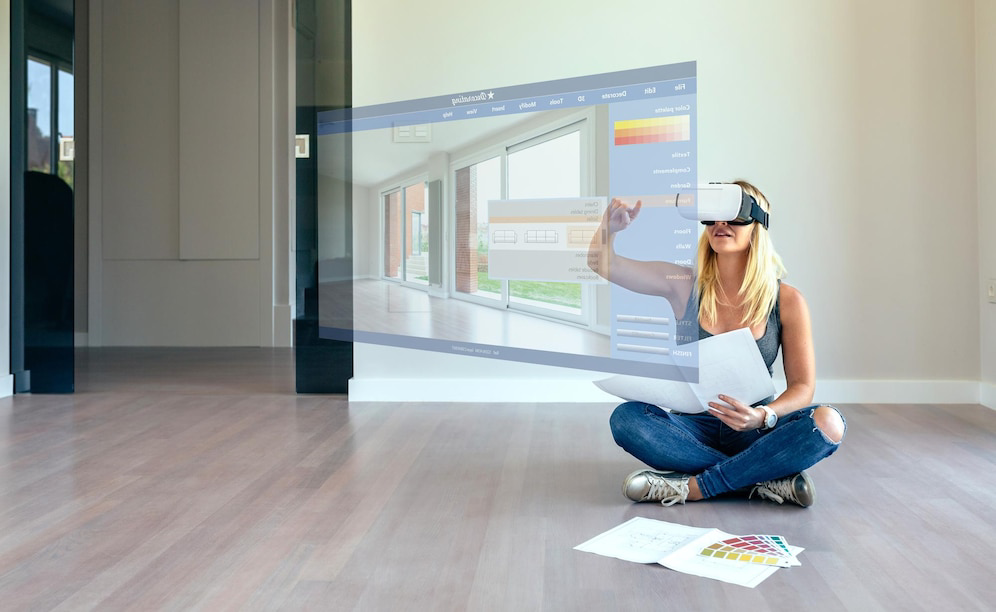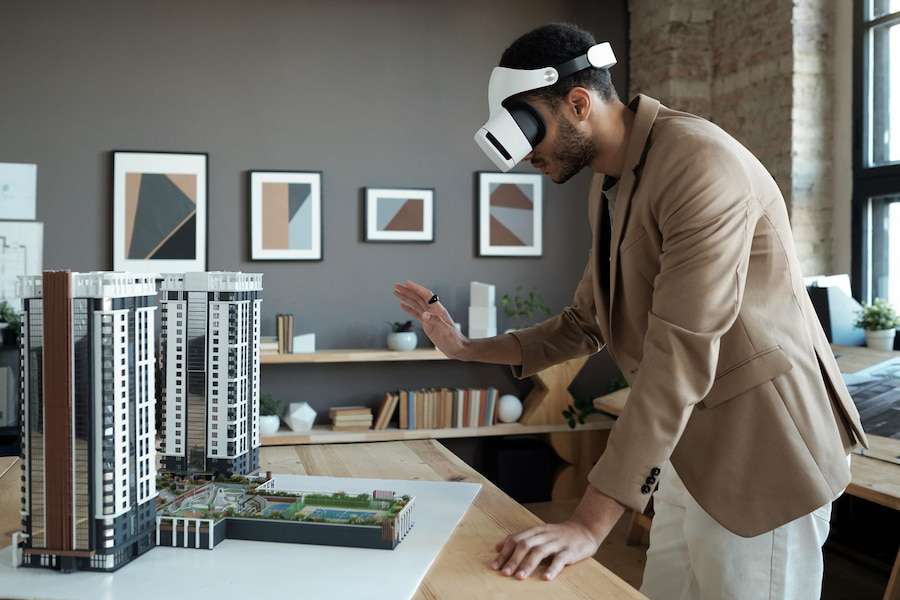With the rise of technology, Virtual Design and Construction (VDC) has transformed the construction industry. This innovative approach to building design and construction uses cutting-edge digital tools to allow architects, engineers, and construction professionals to work seamlessly together. By visualizing projects with an immersive level of detail, VDC enables teams to detect and resolve conflicts before work begins, streamline project management, and increase efficiency and accuracy. This article explores the transformative impact of VDC on the construction industry, highlighting its core principles and how it has broken free from traditional practices to usher in a new era of innovation.

What is Virtual Design and Construction?
Virtual Design and Construction (VDC) is a state-of-the-art approach that integrates digital technologies, advanced modeling techniques, and cooperative processes to enhance building projects’ design, construction, and management. By leveraging virtual models, including Building Information Models (BIM), VDC simulates and visualizes every construction project aspect and detects conflicts before physical construction.
VDC harnesses various tools and technologies, such as 3D modeling, virtual reality (VR), augmented reality (AR), and data analytics, to enhance communication, coordination, and decision-making for all project stakeholders. Architects, engineers, contractors, and owners collaborate in a virtual environment to weigh various design options, evaluate construction processes, calculate costs, and determine timelines.
Adopting VDC can provide various benefits in the construction industry, such as improved collaboration, fewer errors and rework, better project outcomes, increased productivity, and enhanced cost control. It also enables greater efficiency and sustainability by optimizing resource allocation and identifying potential issues early in the project lifecycle.
Virtual Design and Construction revolutionize the construction industry by utilizing digital technologies and collaborative workflows to enable stakeholders to transform their building projects in a virtual environment, ultimately resulting in optimized outcomes and significant cost savings.
What are The Benefits of Virtual Design and Construction?
Virtual Design and Construction (VDC) offers a range of benefits that positively impact the construction industry. Here are some key advantages:
Enhanced Collaboration and Communication
VDC promotes seamless collaboration among project stakeholders, including architects, engineers, contractors, and owners. Through shared virtual models and real-time communication platforms, teams can work together more efficiently, exchange information effectively, and make informed decisions collectively. It improves coordination, reduces miscommunication, and strengthens partnerships throughout the project lifecycle.
Improved Visualization and Decision-Making
VDC enables stakeholders to visualize and experience designs in immersive 3D environments. This enhanced visualization helps better understand the project scope, identify design conflicts, and evaluate different design options. With improved insights, stakeholders can make informed decisions early on, reducing the likelihood of costly changes during construction.
Efficient Planning and Clash Detection
VDC allows for thorough planning and clash detection before construction begins. Creating digital models representing various building systems and components allows potential clashes or interferences to be identified and resolved virtually. This proactive approach minimizes rework, reduces construction delays, and enhances overall project efficiency.
Cost and Time Savings
VDC facilitates the identification and mitigation of construction-related issues during the planning phase. By simulating construction processes and optimizing schedules, VDC helps streamline operations, improving resource allocation and reducing waste. This results in cost savings, shorter project durations, and increased productivity.
Sustainability and Environmental Considerations
VDC supports sustainability goals by enabling energy analysis, material optimization, and environmental impact assessments. By simulating the performance of building systems and evaluating different design alternatives, stakeholders can make informed decisions to enhance energy efficiency, reduce carbon footprint, and create environmentally friendly structures.
Enhanced Safety and Risk Management
VDC identifies and mitigates safety risks early in the project lifecycle. Through virtual walkthroughs and simulations, potential hazards and safety issues can be identified, evaluated, and addressed. This proactive approach improves on-site safety, reduces accidents, and enhances risk management practices.
Improved Facility Management and Maintenance
The virtual models created during the design and construction phase can be leveraged for effective facility management and maintenance. By incorporating asset information, maintenance schedules, and operation manuals into the digital models, owners can have complete access to critical information, facilitating more efficient facility management and reducing long-term operational costs.

Key Consideration in Virtual Design and Construction Revolution
Virtual Design and Construction (VDC) has the potential to revolutionize the construction industry, but like any transformative change, it also comes with its own set of challenges. Overcoming these challenges is crucial to embrace the VDC revolution and fully unlock its benefits fully. Here are some key considerations:
Mindset and Culture Shift
Embracing VDC requires a shift in mindset and culture within the construction industry. Traditional practices may be deeply ingrained, and resistance to change may exist. Overcoming this challenge involves:
- Education and awareness about the benefits of VDC.
- Showcasing successful case studies.
- Demonstrating its value through tangible outcomes.
Adoption and Integration
Integrating VDC into existing workflows and processes can be a complex task. It requires training and upskilling the workforce to utilize digital tools and technologies effectively. Providing comprehensive training programs, workshops, and ongoing support can help individuals and organizations overcome the learning curve associated with VDC adoption.
Data and Information Management
VDC relies heavily on accurate and up-to-date data. Managing and organizing the vast data generated throughout the project lifecycle can be challenging. Implementing robust data management systems and protocols, including standardized naming conventions and file structures, can ensure smooth data exchange and minimize errors or inconsistencies.
Technology and Infrastructure
VDC relies on advanced technologies such as Building Information Modeling (BIM), virtual reality (VR), and augmented reality (AR). Access to suitable hardware, software, and reliable high-speed internet connections is essential. Investing in the right technology infrastructure and staying updated with emerging tools and trends will enable smooth VDC implementation.
Collaboration and Communication
Effective collaboration and communication are critical for successful VDC implementation. Ensuring clear lines of communication and establishing collaborative platforms and workflows can facilitate seamless information sharing and coordination among stakeholders. Emphasizing the importance of open dialogue, regular meetings, and proactive engagement can enhance collaboration in the virtual environment.
Legal and Contractual Considerations
VDC may introduce new legal and contractual challenges. Clarifying ownership, intellectual property rights, and liability issues associated with digital models and data exchange is essential. Working closely with legal experts to address these concerns and adapting contractual frameworks to accommodate VDC requirements will help mitigate risks and ensure smoother project execution.
Industry Standards and Regulations
Establishing industry-wide standards and regulations for VDC implementation can promote consistency and interoperability. Collaborating with industry associations, regulatory bodies, and standardization organizations to develop guidelines and best practices will facilitate a more unified approach to VDC adoption.
In conclusion, Virtual Design and Construction (VDC) represents a transformative shift in the construction industry, offering a range of benefits and presenting unique challenges. Adopting VDC enables enhanced collaboration, visualization, efficient planning, cost and time savings, sustainability considerations, safety, and facility management. VDC optimizes the construction process by leveraging digital technologies and collaborative workflows and leads to better project outcomes. However, embracing the VDC revolution requires overcoming challenges such as mindset and culture shift, adoption and integration, data and information management, technology and infrastructure, collaboration and communication, legal and contractual considerations, and industry standards and regulations. By proactively addressing these challenges, stakeholders can fully harness the potential of VDC and reap its rewards. As the construction industry evolves, embracing VDC will pave the way for more efficient, sustainable, and innovative construction practices, ultimately reshaping how we build for a better future.

